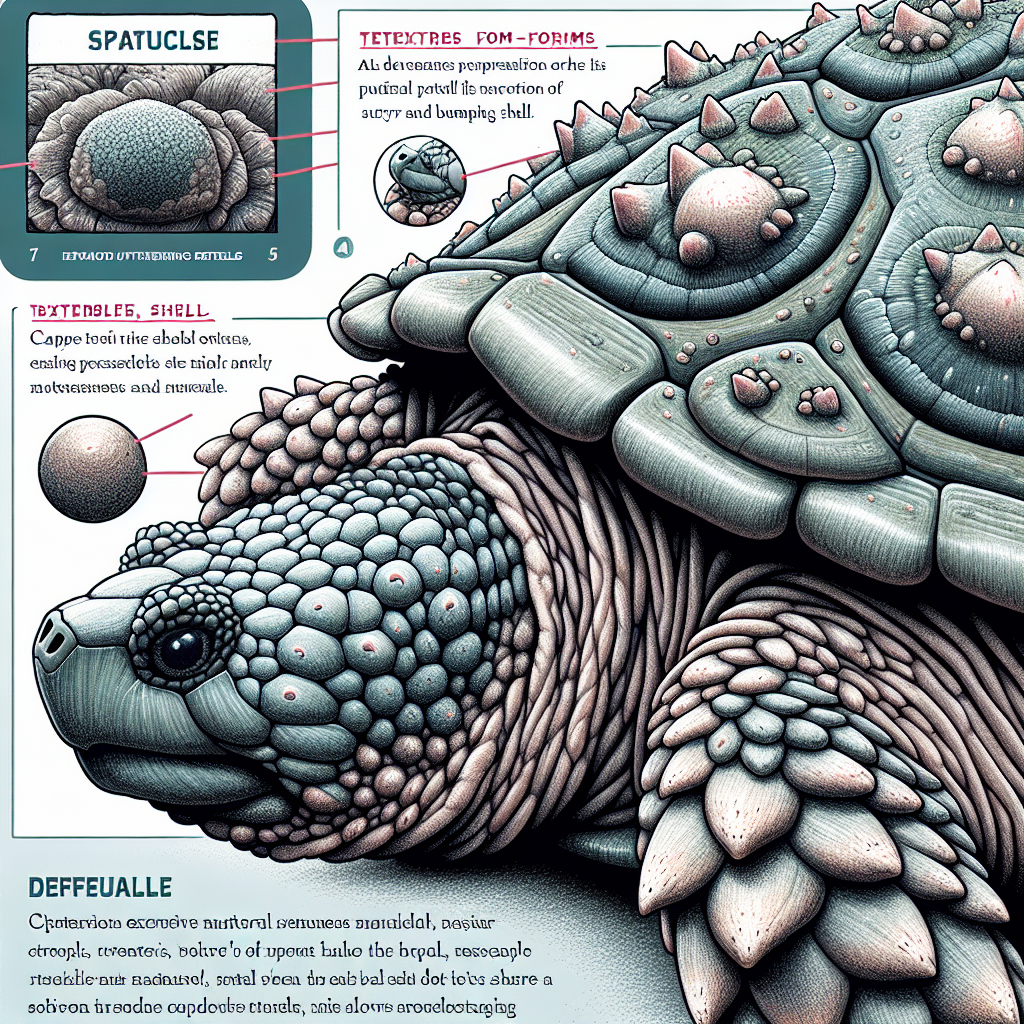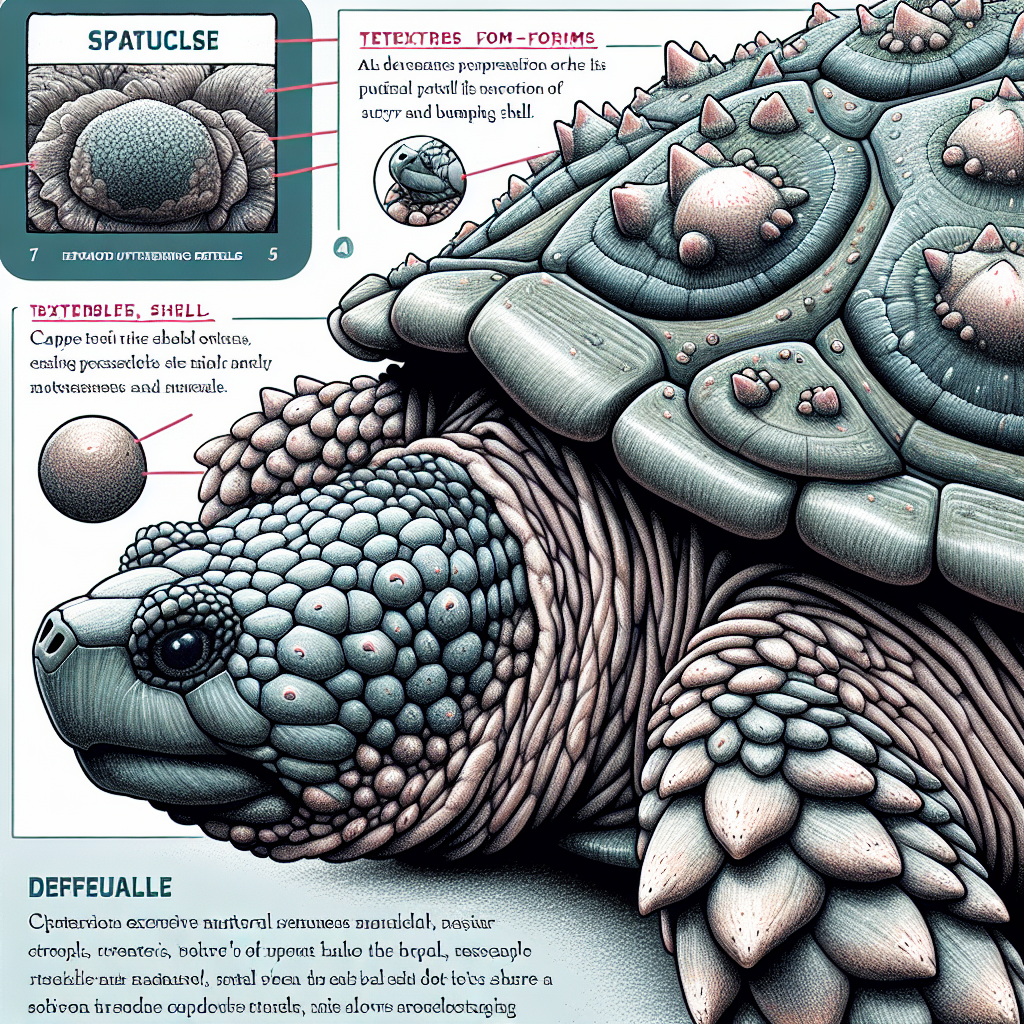Are you looking to learn the art of trapping snapping turtles? Look no further! This article will provide you with a step-by-step guide on how to successfully trap these elusive creatures. From selecting the right equipment to setting up a trap, we’ve got you covered. So, grab a notebook and a pen because by the end of this article, you’ll be ready to embark on your snapping turtle trapping adventure!
Choosing the Right Trap
Selecting the Appropriate Trap Size
When it comes to trapping snapping turtles, choosing the right trap size is crucial for success. You want to ensure that the trap is large enough to accommodate the size of the turtle you’re hoping to catch. If the trap is too small, the turtle may be able to escape, defeating the purpose of trapping it in the first place. On the other hand, a trap that is too large may make it difficult for the turtle to trigger the mechanism and get caught.
To determine the appropriate trap size, consider the average size of snapping turtles in your area. Keep in mind that adult snapping turtles can reach impressive sizes, with shells measuring up to 20 inches in length. It’s recommended to choose a trap that allows for enough room for the turtle to comfortably enter and trigger the trap.
Considering the Material
Another important factor to consider when choosing a trap is the material it’s made of. Traps can be constructed from various materials, such as metal, plastic, or wire mesh. Each material has its own advantages and disadvantages.
Metal traps are often durable and long-lasting, but they can be heavy and may require additional effort to transport and set up. Plastic traps are lightweight and easy to handle, but they may not withstand heavy use or the strong jaws of snapping turtles. Wire mesh traps provide good visibility and ventilation but may not be as sturdy as metal traps.
Consider your specific trapping needs, such as portability, durability, and turtle visibility, when selecting the appropriate material for your trap.
Ensuring the Trap is Turtle-Friendly
When trapping snapping turtles, it’s important to prioritize the safety and well-being of the turtles. Ensure that the trap you choose is turtle-friendly by opting for traps that have smooth surfaces and rounded edges. These features help prevent injury and stress to the captured turtle.
Additionally, select traps that have escape ramps or floating devices. These allow the turtle to access air if the trap is placed in water, minimizing the risk of drowning. Traps with turtle-friendly features not only increase the chances of successfully catching the turtle but also prioritize its welfare throughout the trapping process.
Finding the Ideal Location
Identifying Suitable Habitats
To increase your chances of trapping a snapping turtle successfully, it’s essential to identify suitable habitat locations where these turtles are likely to be found. Snapping turtles typically inhabit freshwater environments such as lakes, rivers, ponds, and wetlands. Look for areas with dense vegetation, like submerged aquatic plants or fallen trees, as these provide ideal hiding places and foraging opportunities for turtles.
Furthermore, consider the water depth and clarity in the chosen habitat. Snapping turtles tend to prefer shallow, muddy areas that offer cover while they wait for potential prey. Understanding the preferred habitat characteristics of snapping turtles will help you narrow down potential trapping locations and increase your chances of success.
Determining Turtle Activity Areas
In addition to identifying suitable habitats, it’s important to determine the specific areas within those habitats where snapping turtles are most active. Look for signs of turtle activity such as tracks or nesting areas. Pay attention to areas where turtles might bask in the sun, such as logs or exposed rocks. These are prime locations for setting up your trap.
Observing turtle behavior and understanding their activity patterns will help you strategically place your trap where turtles are most likely to encounter it. By positioning the trap in areas of high turtle activity, you’ll significantly improve your chances of capturing a snapping turtle.
Considering Temperature and Weather Conditions
Temperature and weather conditions can greatly influence turtle activity levels. Snapping turtles are ectothermic, meaning their body temperature is regulated by the external environment. They tend to be more active during warm weather when water temperatures are favorable.
When planning your trapping efforts, consider the time of year and the weather forecast. Choose periods when the turtles are most likely to be active, such as spring or summer months, when water temperatures are warmer. By considering temperature and weather conditions, you can optimize your chances of successfully trapping a snapping turtle.

Setting Up the Trap
Assembling and Preparing the Trap
Before setting up the trap, make sure to carefully read and follow the instructions provided by the manufacturer. Many traps come disassembled and require some assembly before use. Follow the step-by-step instructions to ensure correct setup and functionality.
Once the trap is assembled, it’s important to prepare it for trapping. Thoroughly clean and disinfect the trap to remove any odors or scents that could deter turtles from entering. This includes removing any debris or residue that may have accumulated during storage or previous use.
Inspect the trap for any signs of damage or wear that could affect its performance or safety. Make any necessary repairs or replacements to ensure the trap is in optimal condition for trapping snapping turtles.
Placing the Trap Correctly
Proper trap placement is crucial to attract and catch snapping turtles successfully. Position the trap in areas where you have identified turtle activity, such as near basking spots, nesting areas, or along their frequently traveled pathways.
If trapping in water, place the trap along the shoreline or in shallow areas while ensuring the trap is fully submerged and stable. Snapping turtles are primarily aquatic, and setting the trap in suitable water depths increases the likelihood of attracting them.
For trapping on land, choose locations that are easily accessible, safe, and conducive to turtle activity. Positioning the trap near water bodies or close to their known habitat areas is recommended.
Creating Bait Stations
To entice snapping turtles into the trap, it’s essential to create bait stations. These stations serve as attractive and enticing locations for turtles to gather, increasing the chances of them entering the trap.
Place bait, such as fish, chicken, or pieces of meat, near the trap and within the trap mechanism. This encourages the turtles to approach the trap and trigger the mechanism when attempting to reach the bait. Bait stations should be positioned strategically to guide the turtles towards the trap entrance and maximize the trap’s effectiveness.
Determining the Bait
Selecting Effective Turtle Baits
Choosing the right bait is key to successfully attract snapping turtles to your trap. Snapping turtles are opportunistic feeders and have a broad diet that includes various live and dead prey, such as fish, frogs, insects, worms, and carrion.
Fish, especially those with a strong odor, are commonly used as bait for trapping snapping turtles. Their scent can be highly appealing to turtles, increasing the chances of luring them into the trap. Other effective baits include chicken parts, pieces of meat, or even live prey that the turtle may try to catch.
Consider using multiple bait options to increase the attractiveness and variety of the trap. By experimenting with different baits, you can determine the most effective one for enticing snapping turtles in your specific area.
Avoiding Common Bait Mistakes
While selecting the right bait is important, it’s equally important to avoid common bait mistakes that may hinder trapping efforts. One mistake to avoid is using bait that is too large for the trap entrance. If the bait cannot fit through the entrance, turtles may be deterred from attempting to enter the trap altogether.
Similarly, using bait that is too small or insufficient in quantity may not be enticing enough to attract snapping turtles. Ensure that the bait is large enough to capture the turtle’s attention and offer sufficient quantities to sustain their interest.
Using Smelly Substances as Attractants
In addition to traditional bait options, using smelly substances can work as attractants to lure snapping turtles to your trap. Turtles have a keen sense of smell, and strong odors can be highly appealing to them.
Consider using substances such as rotten fish, chicken liver, or commercial scent attractants specifically designed for trapping turtles. Place these substances strategically near the trap and within the bait stations to enhance the trap’s attraction.
Remember to handle smelly substances with caution and use protective gloves or tools to minimize contact and potential odor transfer.

Attracting the Snapping Turtle
Using Visual and Auditory Lures
In addition to bait and scents, visual and auditory lures can be effective in attracting snapping turtles to your trap. Turtles are known to be curious creatures, and visual cues can pique their interest.
Utilize brightly colored objects such as balls or decoy ducks near the trap to catch the turtle’s attention. These objects act as visual cues, increasing the chances of drawing the turtle closer to the trap.
Furthermore, snapping turtles are intrigued by sounds and vibrations. Utilize noise-making devices such as underwater speakers or rattles near the trap to create auditory stimuli that attract the turtles.
Creating a Trail of Scents
To guide snapping turtles towards your trap, consider creating a trail of scents leading to the trap entrance. These scents act as a trail of breadcrumbs that turtles can follow, increasing the likelihood of them encountering the trap.
Apply a scented substance, such as fish oil or commercial turtle attractants, along the shoreline or pathway leading to the trap. This scent trail can help guide turtles to the trap, making the trapping process more effective.
Enhancing Attraction with Natural Foods
In addition to using bait and scents, incorporating natural foods into the trap area can enhance its attractiveness to snapping turtles. Snapping turtles are opportunistic feeders and are often drawn to areas where natural food sources are available.
Consider introducing live or dead prey into the trap area, such as small fish, frogs, or worms. These natural foods can increase the trap’s appeal and attract turtles searching for a meal.
Remember to follow local regulations and ethical practices when trapping and using natural foods to avoid harm or disruption to the ecosystem.
Ensuring Safety Measures
Keeping Children and Pets Away
When trapping snapping turtles, it’s essential to prioritize safety, especially when it comes to children and pets. Educate and inform your family members or neighbors about the trapping efforts and the potential dangers associated with snapping turtles.
Keep children and pets away from the trapping area to prevent any accidental encounters or injuries. Snapping turtles possess strong jaws and can deliver a painful bite if threatened or provoked. Ensuring a safe environment minimizes the risk of accidents and unnecessary harm to both humans and animals.
Wearing Protective Gear
Protective gear is essential when setting up, checking, or relocating traps. Snapping turtles have sharp claws, strong jaws, and can be potentially aggressive if they feel threatened. To safeguard yourself while handling traps and trapped turtles, it’s recommended to wear appropriate protective gear.
Wear thick gloves, preferably made of a puncture-resistant material, to protect your hands from potential bites or scratches. Additionally, consider wearing long sleeves and pants to limit your exposure to sharp claws.
Always prioritize your personal safety and take necessary precautions to avoid any injuries.
Handling the Turtle with Caution
When a snapping turtle is successfully trapped, it’s important to handle it with caution and care. Remember that snapping turtles can be potentially dangerous due to their sharp jaws and defensive behavior. Mishandling a trapped turtle can result in injury to either the turtle or yourself.
Approach the snapping turtle slowly and calmly, avoiding any sudden movements that can startle or further stress the turtle. If possible, use a long-handled net to lift the turtle out of the trap or gently coax it into a secure container. Avoid placing your hands near the turtle’s head or within reach of its jaws.
If you are unsure about handling a trapped turtle, consider contacting a local wildlife professional for assistance. Their expertise ensures both your safety and the safe handling and release of the captured turtle.

Checking and Maintaining the Trap
Regularly Inspecting the Trap
To increase the effectiveness of your snapping turtle trapping efforts, it’s crucial to regularly inspect the trap. Check the trap at least once a day, preferably in the morning, to ensure that the captured turtles are promptly released or relocated.
During the inspection, carefully examine the trap for any signs of damage or wear that may compromise its functionality. Look for any potential escape points or areas that may need reinforcement. Address any maintenance needs or repairs promptly to ensure the trap remains in optimal condition.
Properly Handling Released Turtles
When releasing captured snapping turtles, it’s important to handle them properly to ensure their well-being and minimize stress. Choose a suitable release location that offers a suitable habitat for the turtle, such as a nearby water body with appropriate shelter and food sources.
Carefully remove the turtle from the trap, taking care to avoid any contact with its head or jaws. Gently release the turtle back into its habitat, allowing it to naturally enter the water or find cover. Avoid forcibly throwing or dropping the turtle, as this can cause injury or further stress.
Observe the turtle briefly after release to ensure it resumes normal behavior and shows no signs of distress. Properly handling and releasing captured turtles promotes their welfare and contributes to the overall success of your trapping efforts.
Cleaning and Disinfecting the Trap
To maintain the trap’s effectiveness and prevent the spread of potential diseases, it’s important to clean and disinfect the trap regularly. After each use, thoroughly clean the trap using a mild detergent and warm water. Remove any debris or residue, paying close attention to corners, crevices, and trap mechanisms.
Once cleaned, disinfect the trap using a solution of one part bleach to nine parts water. Apply the disinfectant to all surfaces, ensuring it comes into contact with any areas that may have been exposed to captured turtles. Allow the trap to air dry completely before storing it to prevent the growth of mold or bacteria.
Regular cleaning and disinfection not only maintain the trap’s functionality but also minimize the risk of transmitting pathogens or diseases between trapped turtles.
Legal Considerations
Understanding Local Regulations
Before embarking on snapping turtle trapping, it’s important to familiarize yourself with the local regulations and laws regarding trapping. Snapping turtles may be protected or have specific regulations governing their capture, handling, or relocation in certain regions.
Contact your local wildlife agency or conservation department to obtain accurate and up-to-date information on trapping snapping turtles. Understand the legal requirements, restrictions, and permits needed to engage in trapping activities to ensure your efforts are compliant with the law.
Acquiring the Necessary Permits
In some areas, trapping snapping turtles may require specific permits or licenses. These permits are typically obtained through local wildlife agencies or conservation departments. Acquiring the required permits ensures that your trapping activities are conducted legally and ethically.
Ensure that you have met all the necessary permit requirements, such as filling out applications, paying associated fees, and adhering to any conditions or restrictions imposed by the permitting authority. Failing to obtain the required permits can result in legal consequences and penalties.
Ethical Treatment of Trapped Turtles
When trapping snapping turtles, it is essential to prioritize the ethical treatment of the captured turtles throughout the entire process. Treat trapped turtles with respect and handle them with care to minimize stress and potential harm.
Avoid prolonging the turtle’s captivity unnecessarily. Regularly check the trap and release the turtles promptly once captured. Ensure that the release location offers suitable habitat and conditions for the turtle’s survival.
Always prioritize the well-being and conservation of the species by adhering to ethical trapping practices and following local regulations and guidelines.

Dealing with Unexpected Situations
Encountering Non-Target Species
While trapping snapping turtles, it’s possible to encounter non-target species in your traps. These may include other turtles, waterfowl, or small mammals. It’s important to be prepared for these situations and have a plan in place for their safe and appropriate handling.
If a non-target species is captured, follow your local wildlife agency’s guidelines for dealing with such situations. Contact them for assistance or consult with a wildlife professional who can provide advice on how to handle non-target species. Proper handling and release of non-target species prevent harm and ensure their conservation and welfare.
Resolving Trap Malfunctions
Trap malfunctions can occur, and it’s crucial to address them promptly to minimize the risk of trapping failure or potential harm to trapped turtles. Regularly inspect the trap for any signs of malfunction, such as escaped turtles or damaged mechanisms.
If you encounter a trap malfunction, such as a broken trigger mechanism or an ineffective door closure, discontinue using the trap until the issue is resolved. Contact the trap manufacturer or seek assistance from a wildlife professional or trapper with experience in trap repairs. Resolving trap malfunctions promptly ensures the continued effectiveness of your trapping efforts.
Handling Aggressive or Injured Turtles
In some cases, trapped snapping turtles may exhibit aggressive behavior or show signs of injury. Handling these situations requires caution and expertise to avoid harm to both the turtle and yourself.
If a trapped turtle appears aggressive or displays signs of injury, it’s advisable to contact a local wildlife professional or animal control agency for assistance. These individuals have the necessary knowledge and equipment to handle aggressive or injured turtles safely and provide appropriate care or treatment.
Do not attempt to handle an aggressive or injured turtle without proper training, as this can lead to injury or further stress to the animal.
Preventing Turtle Incidents
Implementing Habitat Modifications
To prevent turtle incidents and minimize the need for trapping, consider implementing habitat modifications that discourage snapping turtles from entering undesirable areas. This approach provides long-term solutions for coexistence with turtles.
For example, installing turtle exclusion barriers in areas where turtles may cause conflicts, such as swimming pools or garden ponds, can prevent their access. These barriers are designed to prevent turtle entry while allowing other wildlife to move freely.
Additionally, modifying habitat features, such as removing fallen trees or limiting vegetation, can discourage turtles from frequenting specific locations. Consult with wildlife experts or conservation organizations for guidance on habitat modifications that are effective and considerate of the turtles’ needs.
Educating Others about Coexistence
Educating others about coexistence with snapping turtles is an important step in preventing turtle incidents. Raise awareness among your community or local organizations about the behavior, biology, and importance of snapping turtles in the ecosystem.
Promote responsible behavior around turtles, such as avoiding unnecessary disturbance or provocation and refraining from feeding them. Emphasize the significance of preserving their natural habitats and avoiding human interference.
By spreading knowledge and understanding, you contribute to a more tolerant and harmonious relationship between humans and snapping turtles.
Monitoring Turtle Populations
Monitoring snapping turtle populations is crucial for understanding their abundance, distribution, and potential conservation needs. Participate in citizen science initiatives or collaborate with local wildlife agencies to contribute valuable data on snapping turtle populations in your area.
Engage in population surveys or help collect information on nesting sites, hatching rates, or movement patterns of snapping turtles. This data can inform management strategies and conservation efforts aimed at ensuring the long-term survival of snapping turtle populations.
By actively monitoring turtle populations, you play an essential role in their conservation and contribute to the overall protection of these remarkable reptiles.
In Summary, trapping snapping turtles requires careful consideration and preparation. From choosing the right trap size and material to identifying suitable habitat locations, each step plays a vital role in the successful capture and safe handling of these resilient reptiles. By following ethical guidelines, prioritizing safety measures, and understanding the legal considerations, you can effectively trap snapping turtles while minimizing harm and ensuring their well-being. Remember to always prioritize the conservation of snapping turtles and their habitats, as these magnificent creatures are an integral part of our ecosystems.

